This cottage cheese bread is high-protein, spongy, and stays moist for days. Get ready to experience sandwich bread like never before!
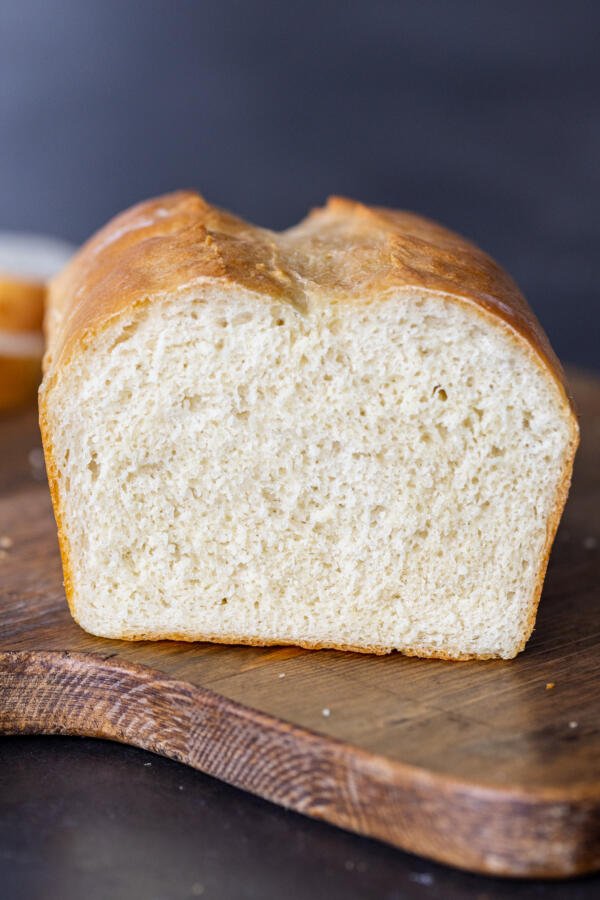
Why Add Cottage Cheese To Bread?
Cottage cheese seems like a strange addition to bread, but this secret ingredient is revolutionary. The fat in cottage cheese imparts a wonderful flavor and tender texture to the bread as it melts. Plus, the high protein content provides an extra boost of nutrition!
Cottage Cheese To Bread Video
How To Make Cottage Cheese Bread
Do you think making bread at home is too complicated? This cottage cheese bread recipe will “prove” any doubts wrong — all it takes is a few simple steps and a bit of patience.
- Activate the yeast: Whisk together the lukewarm water and yeast in a large bowl. Cover and set aside until the mixture foams.
- Mix together the dough: In a blender or food processor, blend the cottage cheese and egg whites until smooth. Add the mixture to the bloomed yeast, along with the flour and salt. Mix the dough together until it coheres, then knead for 10 minutes or until the dough is elastic.
- Perform the first rise: Cover the bowl and allow the dough to rise for an hour.
- Shape the loaf: Transfer the risen dough to a floured work surface and gently stretch it into a rectangle. Roll the dough into a log, then place it into a bread pan seam side down.
- Perform the second rise: Allow the loaf to proof for 30 minutes, or until it reaches the top of the pan. Preheat the oven to 400°F.
- Bake the bread: Slash the center of the loaf with a sharp knife or bread lame, then bake for about 30 minutes. Allow it to rest on a wire rack for at least 30 minutes before cutting in.
Hot tip: If you notice the top of the bread browning too quickly in the oven, cover it with aluminum foil until the inside is baked through.
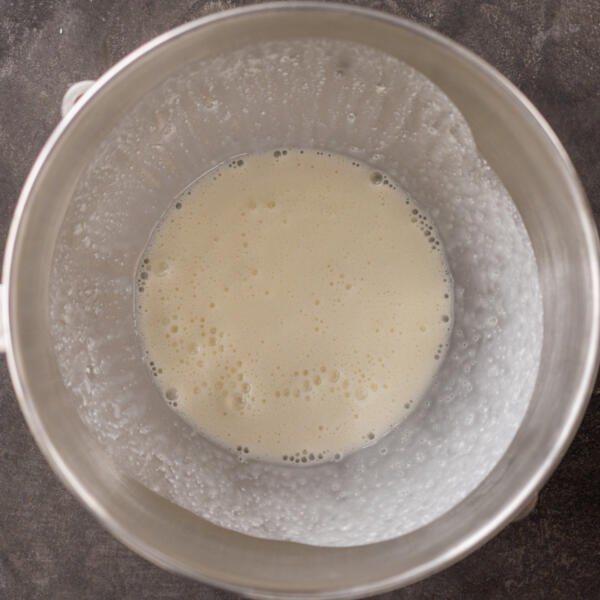

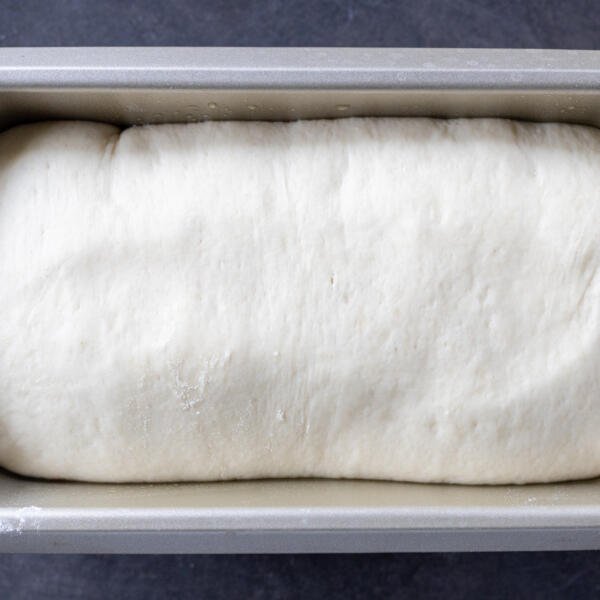
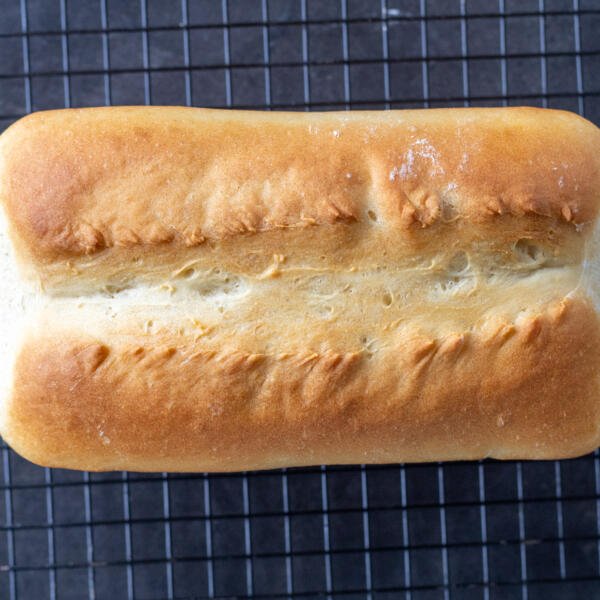
Tips for a Perfect Cottage Cheese Loaf
There’s nothing quite like freshly baked bread… especially when it’s a new recipe that turns out perfect the first time! Tune in to these tips to make a mouthwatering cottage cheese loaf.
- Use egg whites. Egg whites are full of protein and add structure to the bread dough. Wondering what to do with the leftover egg yolks? Make pumpkin crème brûlée! If you don’t want to crack and separate whole eggs, use liquid egg whites in a carton.
- Double the recipe (optional). One loaf won’t last long! Double the recipe and divide the dough into two loaf pans to keep your family satisfied for longer.
- Keep in mind that the dough will be sticky. It may be tempting to add more flour, but the dough needs to be quite sticky to reach the proper baked texture. We love Bob’s Red Mill flour— you may need to adjust the amount depending on the brand you use.
- Knead the dough by hand. While it is quicker to use a stand mixer, we recommend kneading the dough by hand to produce enough gluten formation. Kneading by hand also makes it nearly impossible to overmix the dough. Coat your hands with oil, water, or flour, and use a bench scraper to make kneading less messy.
- Score the bread before baking. Slashing the top of the loaf right before it goes in the oven prevents cracking and encourages it to rise.
- Allow the bread to rest before cutting in. The loaf is full of hot steam when it comes out of the oven, so let it cool completely on a wire rack to avoid getting burned. If you cut yourself a slice too quickly out of the oven (we know it’s hard to resist!), the interior may also be gummy and damp.

Ways To Serve
Cottage cheese bread is delicious and versatile — don’t be surprised if it takes the place of store-bought sandwich bread in your home! Enjoy a warm slice with butter and jam while sipping on a steaming cup of tea. Are you ready for lunch? Make air fryer grilled cheese or a BLT sandwich with your homemade bread. Or, save it for a dinner pairing with Zuppa Toscana or hearty braised beef potatoes.
Storage
Cottage cheese bread is best enjoyed fresh, but the leftovers still make for a tasty treat. Allow the loaf to cool completely, then transfer it to a ziploc bag or airtight container. Store at room temperature for up to three days, in the refrigerator for up to one week, or in the freezer for up to three months.
More Cottage Cheese Recipes
- Cottage Cheese Buns — Sweet, light, and addicting
- Cottage Cheese Pancakes — Fluffy with crispy edges
- Oatmeal Cottage Cheese Waffles — Four ingredients and full of protein
- Cottage Cheese Toast — Garlic toast topped with cottage cheese, tomatoes and basil
- Whipped Cottage Cheese — Silky smooth and perfect for dipping
Recipe
Ingredients
- 1 tsp active dry yeast
- 1/4 cup water lukewarm
- 1 cup egg whites about 5-6 egg whites
- 2/3 cup cottage cheese
- 3 1/2 cups bread flour
- 1 tsp salt
Instructions
- In a large mixing bowl, whisk together the lukewarm water and yeast. Cover and set aside for 5-10 minutes until the mixture foams.
- In a blender or food processor, combine the cottage cheese and egg whites. Blend until perfectly smooth.
- Add the egg white mixture to the bowl with the yeast.
- Add the flour and salt and knead by hand until the dough is elastic, about 10 minutes or so. Cover the bowl with a towel and let it rise in a warm spot for an hour.
- After rising, place the dough onto a floured work surface. Stretch the dough into a rectangular shape, then roll it into a log.
- Place the loaf seam side down into an oiled bread pan and let it rise again for 30 minutes. During this time, preheat the oven to 400°F. Slit the loaf in the center with a sharp knife or bread lame.
- Bake the loaf about 30 minutes or until the top is golden brown. Remove from the oven and let the bread rest for 5 minutes in the pan. Then, tip it out onto a cooling rack and let it rest for 30 minutes before cutting in. Enjoy!
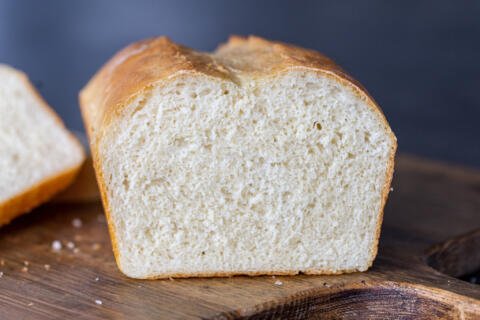
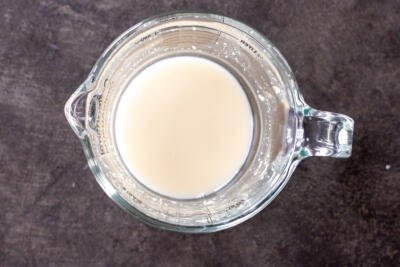
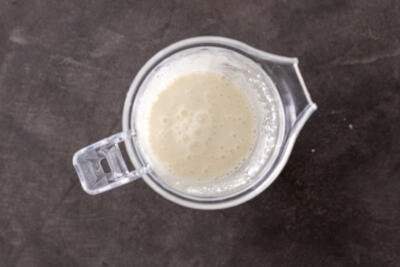
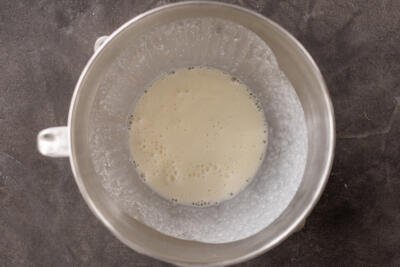

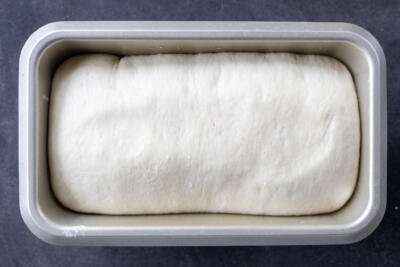

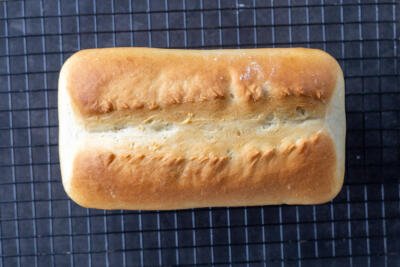






Can you use almond flour?
Hi, Charlene. I haven't personally tried almond flour in bread before, but I'm not sure if it'll work very well. Almond flour doesn't have the elasticity that bread flour creates, which then affects the texture of the bread. I suspect if you use almond flour, the bread would be more dense. I'm also not sure if a 1:1 substitute would be best or if a different ratio would be better. Sorry I can't be more help!
Just wondering why whole eggs are not used here?
Hey Mira, Using egg whites results in a lighter, fluffier texture. The protein in egg whites helps the bread rise and creates an airy, soft crumb, while the cottage cheese adds moisture without making the bread more dense from egg yolks.
Before trying this one I made another similar recipe and it was a disaster! Then I made THIS one and it turned out perfectly. Thank you!! It's so so good. I felt impressed with myself lol
So glad to hear this recipe was a success for you! 🎉 Isn’t it the best feeling when it all comes together perfectly? I’m thrilled it worked out and that you’re loving it—enjoy that well-deserved kitchen confidence!
Hi! When I made it the second time it came out a tad bit more dry (still loved it!) . But because I don't understand the science behind ingredients...can you possibly give me a pointer about what could have made the difference? (Maybe cooked too long?...or a bit more cottage cheese or egg needed?) Thanks!
If your cottage cheese bread came out drier the second time, it could be due to over baking, as that often causes dryness—try checking it a few minutes early. The moisture level in your cottage cheese might have also varied; using a bit more next times might help as well! I hope these tips help!
Could I use whole wheat flour?
Hey Kathy! I haven't tried it with whole wheat flour yet, but you definitely can! You could also do a mix of half whole wheat and half white flour. The texture and flavor will be a bit different from using just white bread flour, but it should still be delicious. If you give it a go, I'd love to hear how it turns out!
Could you use sourdough starter in place of the yeast??
Hey Emily, I have not tried this recipe with a sourdough starter. If you do experiment, please report back!
Hi - is a serving one slice or two? Thanks! — CR
Hi dear, it depends on how large the slice would be. The recipe makes total of 8 servings. Hope this helps. Enjoy
Sounds awesome but I'm celiac. Can I sub gf all purpose flour for bread flour? Can’t find gf bread flour where I am.
To make bread flour you remove 1-1/2 tsps. of all purpose flour (per cup) and add 1-1/2 tsps of vital wheat gluten (per cup).
Hi Dee, I have not tried it but flour makes a huge impact on the outcome. Have you baked other breads with this flour? If you liked the result, I think you will like it here too. Please report back? Thank you!